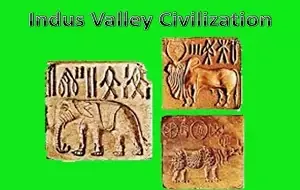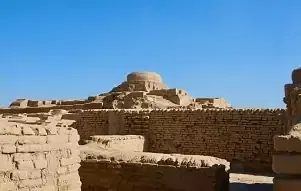Indus Valley Civilization is as yet a
secret
The Indus Valley Civilization is as yet a secret,
despite the fact that it has been found for many years. The compositions here
are as yet not read, while the language of the spot isn't known.
The greatest secret about the Indus Valley Civilization is
that its content has not been perused effectively to date. In any case,
specialists concur that in any event, when the pyramids didn't exist in Egypt,
the Indus Valley Civilization was at its pinnacle, however, there was no impedance of religion and liberal society.
The urban communities of this development spread over in any
event 1,000,000 square kilometers in Pakistan, Afghanistan, and India were so
all around arranged more than two thousand years back that it is difficult to
envision them even in the present urban areas.
At the point when this development was at its pinnacle a huge
number of years back, it was bigger than the joined volume of both the Egyptian
and Mesopotamian civic establishments of the time. It's tremendous urban
areas were situated on the banks of waterways that actually move through
Pakistan and India.
Eminent British paleontologist Charles Mason found it
in the last part of the 1820s when he went to Harappa and examined the blocks
and shards found on the hills here. After thirty years, in 1856, when the
railroad line went through here, these stones were utilized for a rail route
tracks.
In 1920, archeologists directed customary unearthings at Harappa
and Mohenjo-Daro, uncovering the antiquated human progress of the Indus
Valley. As per specialists from the Indian Institute of Kharagpur and the
Archeological Survey of India, they have as of late discovered proof that the
progress is 8,000 years of age, up from 5,500 years back. An article
distributed in Nature Magazine on May 25, 2016, likewise believed it to
be more established than both Egyptian and Mesopotamian human advancements.
Mohenjo-Daro, the biggest city in the progress, has been found to have a
huge pool, which was made of strong block, and was encircled by evolving rooms,
which gives a thought of who these individuals were. Qualities were spotless.
The engravings found on the books, pictures, and coins found
in the Mahanjo Daro contain pictures and images that have not been perused to
date. This antiquated content is as yet a secret to specialists today.
At the point when Harappa, Mohenjo-Daro, and Rakhi Garhi were
uncovered, specialists discovered colossal distribution centers of grain made
of blocks and wood. Every one of these distribution centers was based on the
banks of the waterway to encourage the conveyance of merchandise. There were
likewise pounding factories close to the Harappan distribution center. This
implies that these products were transported to different territories by stream
and ocean.
Lothal in the Indian territory of Gujarat is likewise
probably the most seasoned city in the Indus Valley. A 37-meter-long the dock is viewed as the most seasoned ever found here. From here exchange
occurred among Harappa and the Indian city of Gujarat through the Sabarmati
River. Since in those days, the desert was important for the Arabian Sea.
Kali Bangan, signifying 'Dark Bangles', was chosen the banks
of the stream Ghaghra, presently in Rajasthan, India. Specialists accept that
the primary furrow on the planet was furrowed in this city. While numerous
chimneys have been found here, which additionally proposes that these
individuals used to love fire.
Specialists have likewise discovered proof here that proposes
that individuals of Sind development were keen on toys and sports. There are
square boxes on the rocks, which is presumably the most punctual type of chess.
Nonetheless, a six-sided stone like a ludo grain has additionally been found
here which may have been utilized in a comparative game.
In Mohenjo-Daro, lined houses and washrooms, straight
roads, road receptacles and channels covered with waste, and in any event, 700
water wells are sufficient to comprehend that the Indus Valley People
settled the urban areas with standard arranging.
Family things included peacocks, neckbands, adornments, and
utensils. There were both rich and poor in the city, yet shockingly there were
no spots of love and no hints of a ruler's castle. Not many weapons have been
found here which demonstrates that individuals here were tranquil and persuaded
of conjunction.
Among the most bountiful things found in the cultivated urban
areas of Sind are decorations that mirror individuals' affection for style,
just as cotton coloring production lines.
Sugar, vermilion, and kohl were additionally utilized in
beautifiers. There are additionally sculptures made of mica and exceptional
sorts of mud. Among them is a bronze sculpture of a young lady obviously moving?
There is likewise a ruler with facial hair growth and a bullock truck made of
mud.
Seals have been found in and around Harappa to assist us with
understanding that there was a normal arrangement of exchange dependent on sex
rather than cash and that this exchange joins reached out to zones similar to
Mesopotamia. Were The accessories, utensils, and weapons found in the city of
Ur in Mesopotamia is like those found in Harappa.
A great many engraved seals with pictures of Mahadev
Pashupati has been found in Harappa, the soonest proof of Shiva and Vedic.
Another amazing thing is that the individuals of Harappa were clerics of
goddesses rather than divine beings. Countless icons have been found here.
There are likewise 57 graveyards in Harappa with square
graves in which their possessions have been covered simultaneously. A sum of 44
human skeletons have been recuperated from Mohenjo-Daro, including a mother,
father, and their kid holding each other's hands. Specialists make various
presumptions about how these individuals passed on.
How did life end so abruptly in Harappa and Mohenjo-Daro? In
such a manner, specialists have not yet arrived at any proof of war, fire, or
flood, however, it appears to be that the redirection of the waterways of
Sindh, Ghaghra, and Hakra pulverized the economy of these urban communities and
bit by bit life here got terminated.








0 Comments